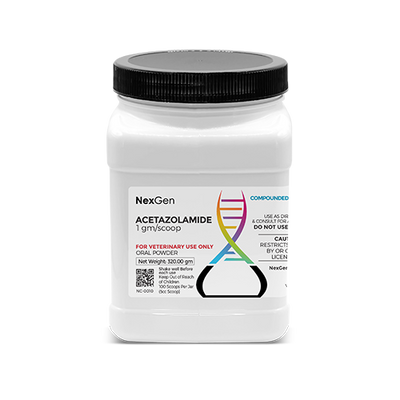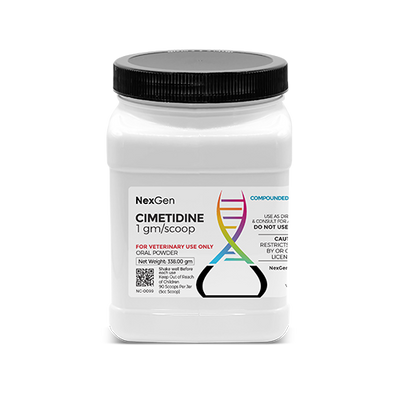
Meloxicam 0.5 gm/scoop, Oral Powder, 100 Scoops (5cc Scoop)
Login for pricing
- Brand
- Mixlab
- SKU:
- NC-0364
- Product Type:
- Powder
- Size:
- 16oz
- Administration:
- Oral
- Scoops Per Container:
- 100
- Scoop Size:
- 5cc
Lameness is a general term used to describe abnormalities in a horse’s gait, usually in response to pain in a limb or some mechanical restriction on movement.1 The onset most commonly results from pain in the muscles, tendons, ligaments, bones, or joints which leads to abnormal movement at the walk, trot, or canter. Lameness accounts for significant losses within the equine industry, amounting to hundreds of millions of dollars annually.3 Lameness affects horses of all breeds. Unfortunately, many horses experiencing lameness are asked to perform despite their pain because of owners, managers or riders failing to recognize the condition.
Horses can become lame from a variety of causes, involving nearly any anatomic region within a limb, and some conditions are more easily diagnosed than others. Lameness is actually a clinical indication rather than a disease. Mechanical lameness is typically the result of a complete upward fixation of the patella with its characteristic gait abnormality, but can also be the result of fibrotic myopathy of the semitendinosus muscle or of restrictions caused by annular ligaments, adhesions, or severe fibrosis.2
Understanding Lameness in Equines
Pain-related lameness can be classified as weight bearing (occurring in the supporting leg) or non-weight bearing (occurring in the moving leg). Although it is most often observed as a weight-bearing problem, lameness may be composed of both. Supporting leg lameness is generally seen when a horse reduces the amount of time or reduces the amount of force applied to the weight-bearing limb.2 The most easily-recognized clinical signs of lameness are the characteristic head nod associated with forelimb lameness and the rise of the hip associated with hindlimb lameness. Forelimb lameness is assessed from the front and side, while hindlimb lameness is assessed from the side as well as from behind.1
Horses can be predisposed to lameness due to factors including physical immaturity, developmental orthopedic disease, poor conformation, improper hoof balance or shoeing, adequate conditioning and repetitive stress.2 Other factors include direct or indirect trauma, fatigue resulting in incoordination of muscles inflammation and infection. It is important to correctly determine the cause of the lameness, because treatment will vary greatly depending on the causative factor(s). Quantitative gait studies have shown that a large proportion of horses in training, perceived as free from lameness by their owners, show movement asymmetries of equal magnitude to horses with mild clinical lameness,3 and disorders of the locomotor apparatus are collectively the most common reason for equine veterinary consultations.2,3
Lameness in one part of a limb can result in secondary soreness in another area of the same limb, and can result in lameness of another limb from overuse due to compensation. Therefore, any horse experiencing lameness should be evaluated for secondary lameness even when the cause of the primary problem is evident.1 Secondary lameness is very common in performance horses, but may occur in any breed.
Diagnosing Lameness in the Horse
The diagnosis and treatment of lameness is a comprehensive process, requiring an understanding of equine anatomy and physiology, conformation, biomechanics, and medicine. It also requires adaptation in response to changing conditions, horse types and breeds, uses and personalities, and the needs of the owner.1
Generally, lameness exams consist of:
(1) History,
(2) a standing exam
(3) an exam in movement,
(4) flexion and hoof tester exams,
(5) diagnostic anesthesia – nerve and joint blocks, and
(6) imaging (e.g., radiographs, ultrasound, MRI).
Veterinary treatments used for lameness diagnoses typically include:
- Joint (intra-articular) injections of steroids and other substances to reduce inflammation and pain in an arthritic joint.
- Systemic (oral or injectable) anti-inflammatory drugs and pain relievers to manage multiple pain sources.
- Surgery (e.g., arthroscopy) is often used to treat certain types of lameness. Here, repairs are made to the joint surface through several tiny incisions using a small camera and instruments inserted into the joint.2
Meloxicam for Lameness in the Horse
Meloxicam appears to be well absorbed in horses. Elimination half-life in horses given 0.6 mg/kg IV toward the end of laparotomy for colic syndrome was 6.9 hours and 5 hours in horses given 0.6 mg/kg PO once daily for 14 days. Absorption was similar in foals younger than 6 weeks of age, but elimination half-life was 2.5 hours.3
Where to buy Meloxicam
Meloxicam is available in the U.S. through several pharmaceutical manufacturers and through veterinary custom compounding companies.
Meloxicam carries numerous potential drug interactions. Please consult your veterinarian prior to beginning any treatment regimen.
FOR RX ONLY: A valid prescription from a licensed veterinarian is required for dispensing this medication.
1acvs.com.
2Merck Veterinary Manual.
3Persson-Sjodin E, Hernlund E, Pfau T, Haubro Andersen P, Holm Forsström K, Rhodin M (2019) Effect of meloxicam treatment on movement asymmetry in riding horses in training. PLoS ONE 14(8): e0221117.


















